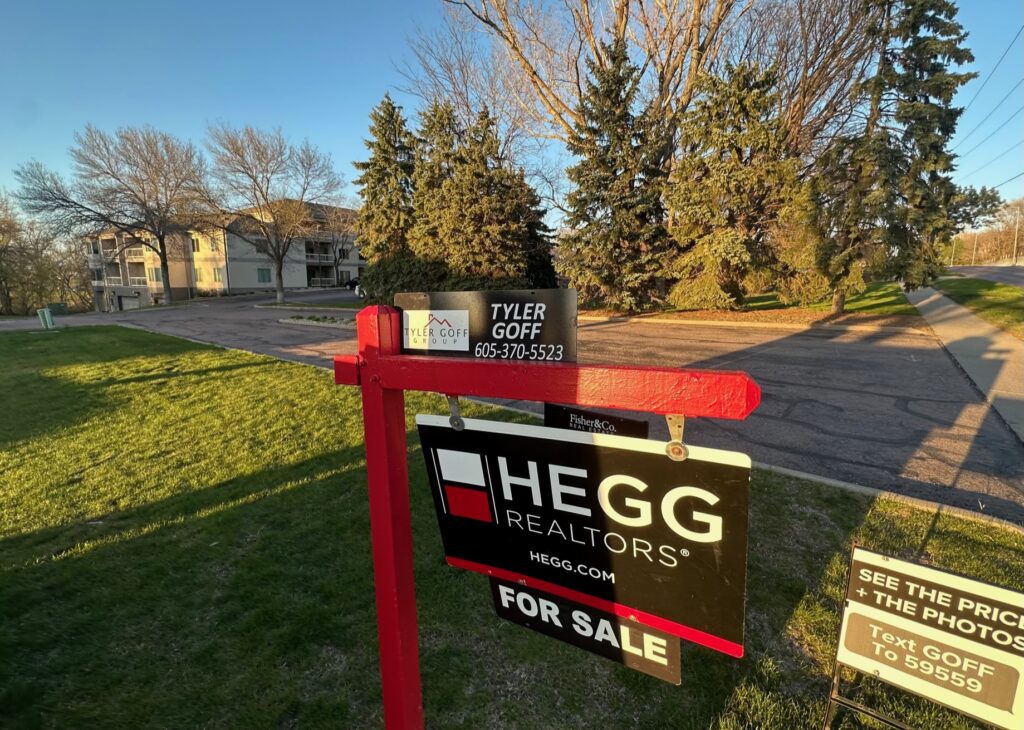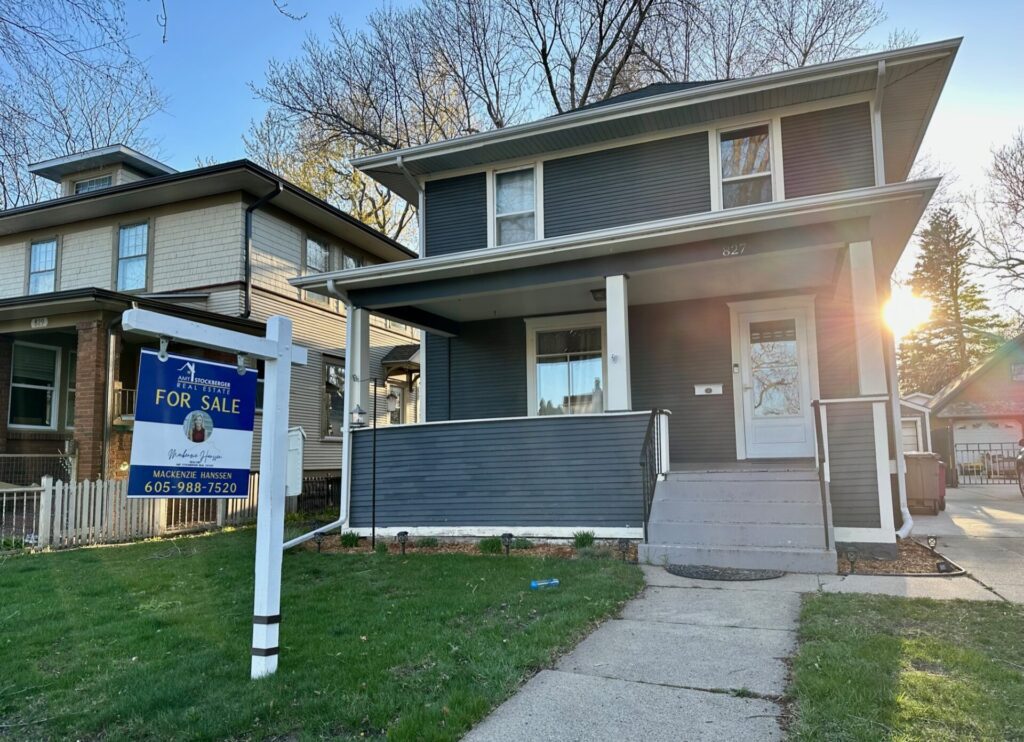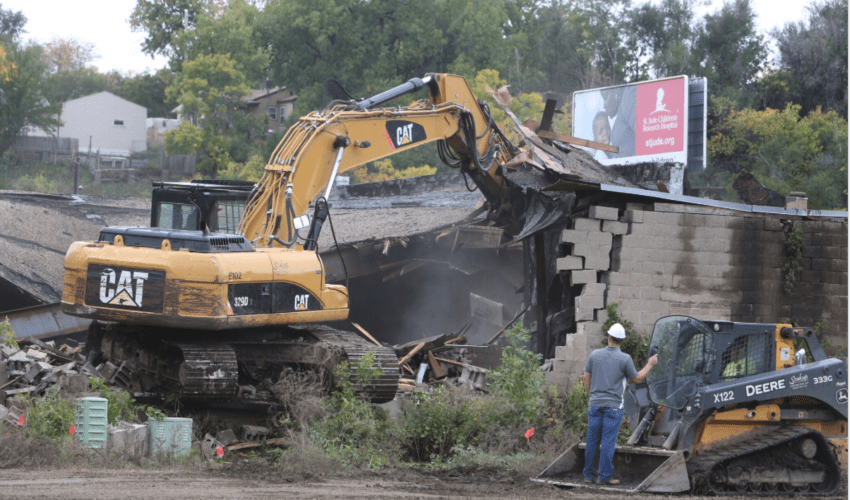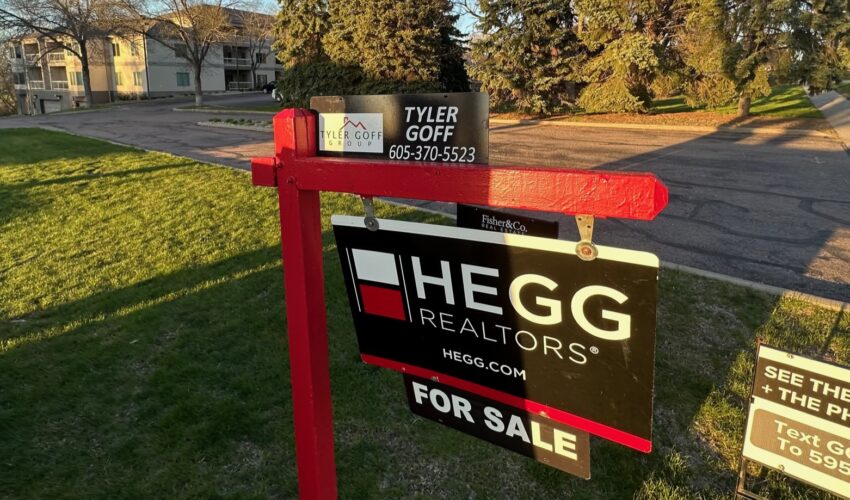As Sioux Falls surpasses 1,000 real estate agents, forging career might get more difficult
April 22, 2024
The odds aren’t necessarily stacked in someone like Julie Roth’s favor when it comes to building a career in residential real estate.
Roth, a licensed agent for five years, has a background in interior design that made expanding into selling homes feel “like a natural progression,” she said.
“It’s kind of a crazy industry,” she then found out. “There’s a huge learning curve because the licensing requirement of 100 hours is not a lot. You learn a lot, definitely, boots on the ground.”
In her case, it has been a fit. Roth was named one of the 4 Under 40 for up-and-coming agents last year by the Realtor Association of the Sioux Empire Inc., or RASE.
But as she looks back on her time in training, where she learned alongside 10 other new agents, “I think there are probably three or four of us that are still in the industry … and maybe two are really more of actually full-time agents where we don’t have to have a secondary income or something like that. And I think that’s pretty typical, unfortunately.”
The data appears to confirm her hunch. At the end of 2023, there were 1,056 licensed real estate agents in the Sioux Falls metro area, according to RASE, which encompasses 16 municipalities.
At the same time, there were 2,645 closed sales last year in Sioux Falls, and 3,422 homes sold including the broader metro area.
On average, that would pencil out to two or three homes per licensed agent, though in reality some sell even fewer.
“That’s a fair trend nationwide,” said Kate Patrick, a Realtor with 605 Real Estate and current RASE board chair. “They used to always say 80 percent of the business is done by 20 percent of the agents. That might not even be accurate anymore. It could be a larger variation.”
But the number of licensed real estate professionals in the area governed by RASE keeps growing. In 2019, it was up 11 percent before flattening in 2020, then growing again by 8.5 percent in 2021 and a combined 5 percent in the past two years.
“Real estate sometimes is a secondary occupation for some — it’s maybe not their full-time job,” Patrick said. “A hobby, I don’t know. There’s a lot of layers there. An agent may be very happy with 10 transactions a year. So there’s that variation of ‘where do we want this business for us or our career to go.'”
Those trying to make it a full-time job will find a handful of hurdles to overcome and should be prepared to work for it, those in the industry say.
For instance, the Sioux Falls market has hovered around a two- to three-month inventory of homes for the past several years. Last month, there were 336 new homes listed in the city, down 9 percent from the same time last year, and 182 closed sales, which is five fewer homes than the same time last year.
Higher interest rates are keeping some sellers out of the market and making financing conditions tougher for some buyers.
And then came a potential change in how Realtors are paid commission. Last month, in a settlement with the federal government, the National Association of Realtors agreed to no longer include offers of compensation for a buyer’s agent on any of its affiliated databases such as the Multiple Listing Service. Agents also will be required to enter into a written agreement with homebuyers they represent that stipulates what the agent will charge them. The changes are expected to take effect in July.
In South Dakota, buyer agency agreements already are used, so while there likely will be some changes, it won’t be as dramatic as other states, those in the industry said.
“I think the reality of the lawsuit in general is going to make us all better,” Patrick said. “I’m not saying some of us haven’t already been very transparent and good about buyer representation agreements or licensing contracts, but an agent who maybe isn’t as seasoned or prepared to have those conversations, it’s going to be harder. You are going to have to show your value.”
Growing a business
Roth, who estimates she sells 50 to 60 homes annually, typically is at work by 8 a.m. and estimates she works 50 to 60 hours a week.
“And sometimes, our appointments go to 6, 7, 8 p.m. And it’s nights and weekends, and it’s a lot of hours,” she said. “You don’t have to work like that to be successful, but I would say it truly is 40 hours per week or more if you’re going to be a successful full-time agent. It’s definitely a very demanding profession, but it’s so rewarding too.”
Especially in the early years of an agent’s career, if a buyer wants to go look at a house at 6 p.m. and you just sat down to eat, “you’re going to do it,” Patrick said.
“As you grow, you can set different parameters, but yesterday I worked 9 a.m. to 9 p.m. and had snacks in my car. There’s days like that. You can work when you want, but the reality is you’re working when others aren’t working, and our schedules definitely aren’t our own.”
When Amy Stockberger got into the real estate industry in 2000, her father, who also worked in the field, told her not to do it.
“It’s too scary. It’s too hard,” he told her. “I was working 15 hours a day trying to build my worth. My sister and I used to run 15 to 20 open houses a weekend back in the day, and that was before Google, when we would pick up 75 percent of our business at open houses.”
She cites data that 85 percent of people in the real estate industry leave in their first five years.
“Agents have to have the skill set to explain their value proposition,” she said. “The four-hour-a-week real estate agent no longer exists. They don’t. Sellers are not going to want to hire a part-time surgeon to do their surgery.”
Tyler Goff has worked through those difficult early years. After entering the industry in 2005, he encountered the Great Recession a few years later.
“You couldn’t get anybody to do anything. There was no movement in the market at all, and there were a lot of nights I would talk to my wife and question not if I made the right choice to get into it but if I could continue to do it the way the market was going,” he said.
In the beginning, “it’s hard because you’re competing with people that have been doing it for years and years and have those connections made,” he said. “It’s like starting a new business. You don’t have all the years of experience to go along with and compete with those other agents, so really it comes down to you have to out-hustle and just put more time and effort than they do to get your foundation set for your business.”
He trains new agents with a simple first step: pick up the phone and start making calls.
“I know that doesn’t sound appealing, but in order to make it in this business, you have to be willing to put yourself out there. You have to be willing to hear the word ‘no’ a lot and not let it discourage you,” he said. “There’s a lot that goes into our training, and we don’t sugarcoat it with new agents. It’s a lot of hard work and dealing with difficult situations and having to overcome them quickly and come up with a solution for your client.”
According to information from the NAR reported by the website 1percentlists in 2023, the average Realtor nationally completes a median of 12 residential transactions annually — meaning representing either a buyer or seller. The association estimates the average Realtor works 35 hours a week and makes $54,000 a year.
Locally, Goff estimates the average agent works on fewer than seven transactions in a year.
“If you have a handful of agents selling 30 or 40 or 50, that means there’s a lot of them selling zero or one or two,” he said. “I’ve never been a fan of a part-time agent. It’s an all-consuming business. I think we’re going to find out — and I think we are finding out — if we have too many agents in our market.”
Consumers often don’t think to ask or verify how many transactions an agent worked on in the past year, he added.
“We like to tell our agents you should be doing a minimum of two deals a month,” he said of his 14-person team. “That keeps you in the market and active because our market changes daily.”
The equation around supply, demand and interest rates always is evolving, “and it changes how you negotiate or write an offer for a client,” he said. “If you’re not in tune with the market today, it’s really hard to give sound advice.”
Differing models
While many deals include a 3 percent commission to both the buyer’s and seller’s agents, that number is and always has been negotiable, those in the industry say.
“I’ve talked to agents who charge more, and I’ve talked to agents who charge less and who charge a flat fee,” Patrick said. “There is variation. That number has always stuck out or been assumed, but there are many different business models out there.”
The way agents structure their business also can vary.
For Roth and a handful of other agents in the Sioux Falls market, a cloud-based brokerage has become their new back office. While she began her career and was mentored at longtime firm Hegg Cos., now part of Edina Realty, she joined Real Broker LLC late last year. The national cloud-based broker minimizes overhead through virtual services and uses cloud-based technology for education and meetings.
While she still has a physical office in Sioux Falls, “I’m tied to a team in Texas and New Jersey, and I get to touch base with all these teams and get different perspectives, which I felt like I didn’t really have with a local brokerage.”
Still, the mentoring she gained locally was key too, she said.
“That’s one of the reasons I was able to hit the ground running and really be successful,” she said. “There are a lot of people I went through classes with who struggled in their first couple of years. Having a team or mentor is really important for a new agent to be successful.”
Stockberger, who leads an independent team of 22 agents, uses a model in which a real estate transaction leads to a lifetime of services from her firm.
Her “lifetime home support” program offers everything from access to moving trucks, trailers and suppliers, to tools for home projects and even equipment for parties — things most people have to rent, buy or store — plus a VIP discount center on popular national brands.
“If you’re coming into it just to sell houses, it’s not going to be a business that will likely last,” she said. “The agents who come in and follow the steps and are able to turn one client into five by being of service to their clients, so they’re able to create that referral business, that’s where our new agents win, and we can build their base.”
Then, there are the always-changing market dynamics to consider. While Goff, who is part of Hegg, calls the past couple of years “the most challenging market we’ve ever seen,” his team has set records.
“Just since COVID really, we’ve had to adapt and adapt really quickly to new obstacles and new ways of doing business.”
That has ranged from virtual and touchless showings and selling homes to relocating buyers that agents have never met in person to now navigating limited inventory.
“You just had to use all your connections from other agents to really find homes for your clients,” he said.
“It was a lot more bootstrapping and hustle to find something to show them. And now, we’re dealing with high interest rates, which are really creating a math problem for people in a lot of cases. So it’s been challenging to say the least the last four years, but what’s great about the Realtor community and especially those that succeed is they’re pretty adaptable. They will just figure out what needs to be done and figure out a new way or new path. … You can’t get stuck in your old ways by any means in this business.”
















